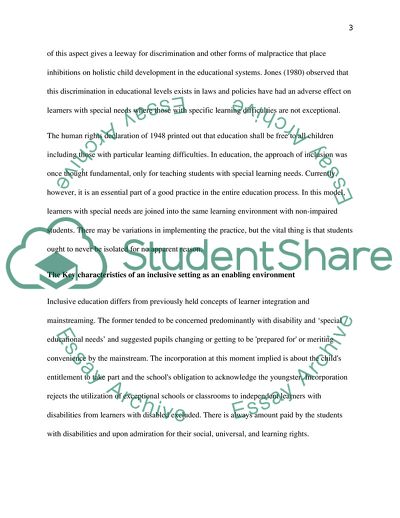Cite this document
(The Definition and Context of Inclusion / Equality Practice in the Early Years with Reference to Legislation and Policy Term Paper Example | Topics and Well Written Essays - 3750 words, n.d.)
The Definition and Context of Inclusion / Equality Practice in the Early Years with Reference to Legislation and Policy Term Paper Example | Topics and Well Written Essays - 3750 words. https://studentshare.org/education/1872028-sen-and-diversity
The Definition and Context of Inclusion / Equality Practice in the Early Years with Reference to Legislation and Policy Term Paper Example | Topics and Well Written Essays - 3750 words. https://studentshare.org/education/1872028-sen-and-diversity
(The Definition and Context of Inclusion / Equality Practice in the Early Years With Reference to Legislation and Policy Term Paper Example | Topics and Well Written Essays - 3750 Words)
The Definition and Context of Inclusion / Equality Practice in the Early Years With Reference to Legislation and Policy Term Paper Example | Topics and Well Written Essays - 3750 Words. https://studentshare.org/education/1872028-sen-and-diversity.
The Definition and Context of Inclusion / Equality Practice in the Early Years With Reference to Legislation and Policy Term Paper Example | Topics and Well Written Essays - 3750 Words. https://studentshare.org/education/1872028-sen-and-diversity.
“The Definition and Context of Inclusion / Equality Practice in the Early Years With Reference to Legislation and Policy Term Paper Example | Topics and Well Written Essays - 3750 Words”. https://studentshare.org/education/1872028-sen-and-diversity.


